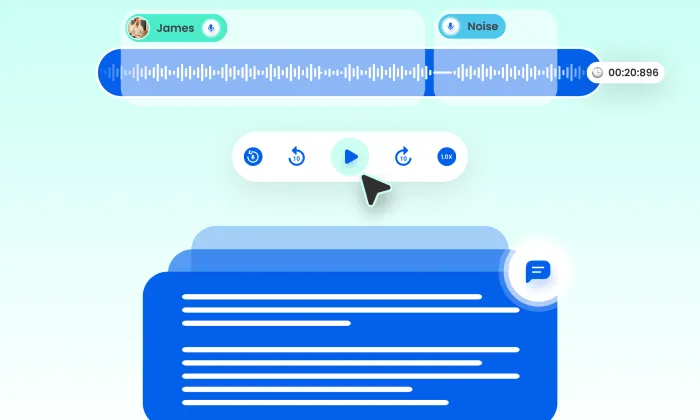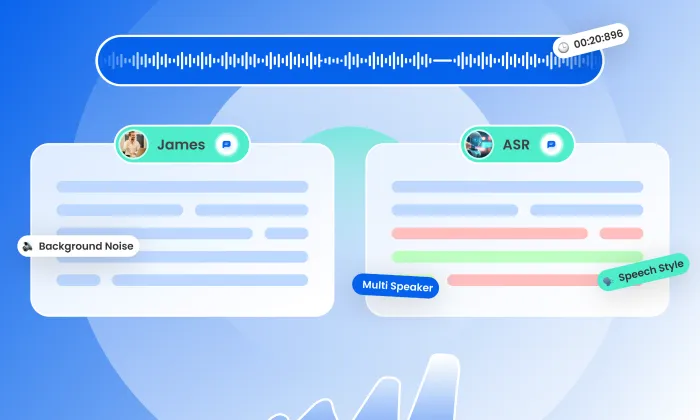Are datasets used in voice-to-structured-data pipelines?
Data Processing
Speech Recognition
Voice AI
Datasets are fundamental in voice-to-structured-data pipelines, as they enable the conversion of spoken language into structured formats. This process is vital for various applications, including automating medical records and enhancing customer service interactions. For AI engineers, researchers, and product managers at AI-first companies, understanding how these datasets work is crucial to developing effective systems.
Why Datasets Are Essential for Voice-to-Structured Data Pipelines
Datasets provide the essential building blocks for voice-to-structured-data pipelines. They consist of audio recordings paired with transcriptions and annotations, which help machine learning models recognize speech patterns and accurately convert them into structured formats like JSON or XML. High-quality datasets are critical for ensuring these models perform effectively and understand the nuanced context of spoken language.
Key Use Cases
- Medical Records Automation: In healthcare, datasets like doctor dictation datasets are invaluable. These datasets feature clinical voice recordings where clinicians verbally compose patient information, capturing not just the speech but also the medical terminology crucial for accurate transcription and understanding.
- Customer Service Enhancement: Voice-to-structured-data pipelines can also improve customer service by converting customer queries into structured data, enabling faster response times and more personalized service.
How Datasets Work in the Pipeline
The effectiveness of a voice-to-structured-data pipeline hinges on several stages, each dependent on the quality of the datasets used:
- Data Collection: High-quality audio is recorded, often in controlled environments to minimize background noise. For example, medical dictation datasets are typically collected in quiet clinical settings to ensure clarity. FutureBeeAI offers speech data collection services that ensure structured gathering of high-quality audio.
- Transcription: The audio is transcribed into text, requiring both automated tools and human oversight to ensure accuracy, especially with specialized terminology.
- Annotation: Transcriptions are annotated to add context, such as identifying medical terms or treatment plans in healthcare datasets. This step is crucial for enabling machine learning models to perform tasks like Named Entity Recognition (NER). FutureBeeAI provides speech annotation services to enhance the contextual understanding of datasets.
- Training and Validation: Machine learning models are trained using these annotated datasets. Validation datasets are used to test the model's accuracy and ensure it performs well across diverse scenarios.
Decisions and Trade-offs in Dataset Development
Developing datasets for voice-to-structured-data pipelines involves several critical considerations:
- Balancing Quantity and Quality: While large datasets can be tempting, quality is paramount. High-quality datasets ensure better model performance, even if they are smaller in size.
- Customization vs. Generalization: Some datasets are tailored for specific applications, such as medical fields, while others aim for broader applicability. The choice depends on the intended use case.
- Ethical Considerations: Compliance with regulations like HIPAA or GDPR is essential, particularly in datasets involving sensitive information such as medical records. Ensuring data privacy and regulatory adherence is crucial.
Common Pitfalls Experienced Teams Encounter
Even experienced teams can encounter challenges with these datasets:
- Neglecting Diversity: Datasets that lack diversity in speech patterns, accents, or terminology can result in models that do not perform well in real-world scenarios.
- Inadequate Quality Control: Rigorous quality assurance processes are necessary to maintain transcription and annotation accuracy. This includes both automated and human reviews.
- Overlooking Continuous Improvement: Datasets should evolve with language use and real-world feedback. Continuous updates ensure they remain relevant and effective.
Conclusion
In the rapidly evolving field of AI, datasets are the backbone of voice-to-structured-data pipelines. High-quality, diverse datasets enable more effective AI models, driving better outcomes in applications like medical records automation and customer service enhancement. FutureBeeAI specializes in creating comprehensive datasets, including doctor dictation datasets, that adhere to medical-grade quality assurance and strict compliance standards. For projects requiring domain-specific data, FutureBeeAI offers scalable solutions that can deliver ready-to-use datasets in a matter of weeks.
Smart FAQs
Q: What factors should be considered when designing a dataset for voice-to-structured-data applications?
A: Consider the target audience, domain-specific terminology, diversity in speech patterns, and adherence to regulatory compliance to ensure the dataset accurately represents real-world scenarios.
Q: How can teams ensure the accuracy of transcriptions in their datasets?
A: Implementing a multi-step quality assurance process involving both automated checks and human review can significantly enhance transcription accuracy, ensuring that terminology and context are correctly captured.
What Else Do People Ask?
Related AI Articles
Browse Matching Datasets
Acquiring high-quality AI datasets has never been easier!!!
Get in touch with our AI data expert now!








